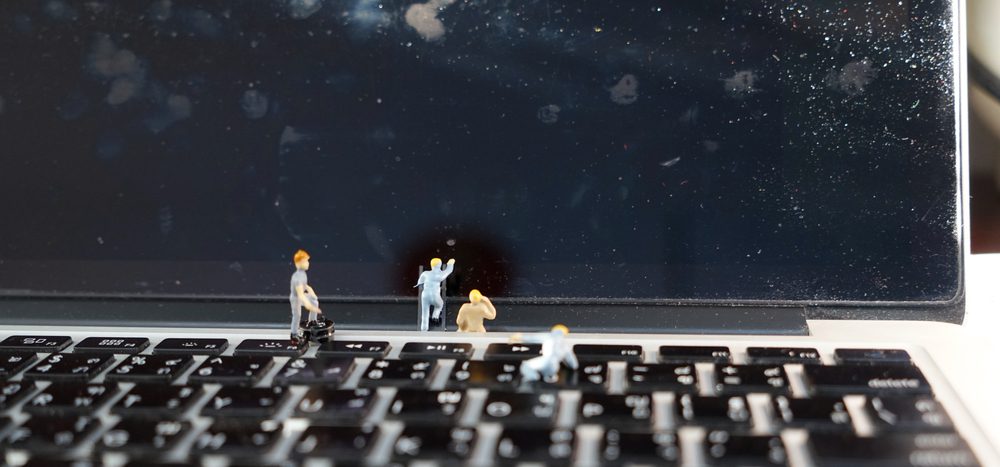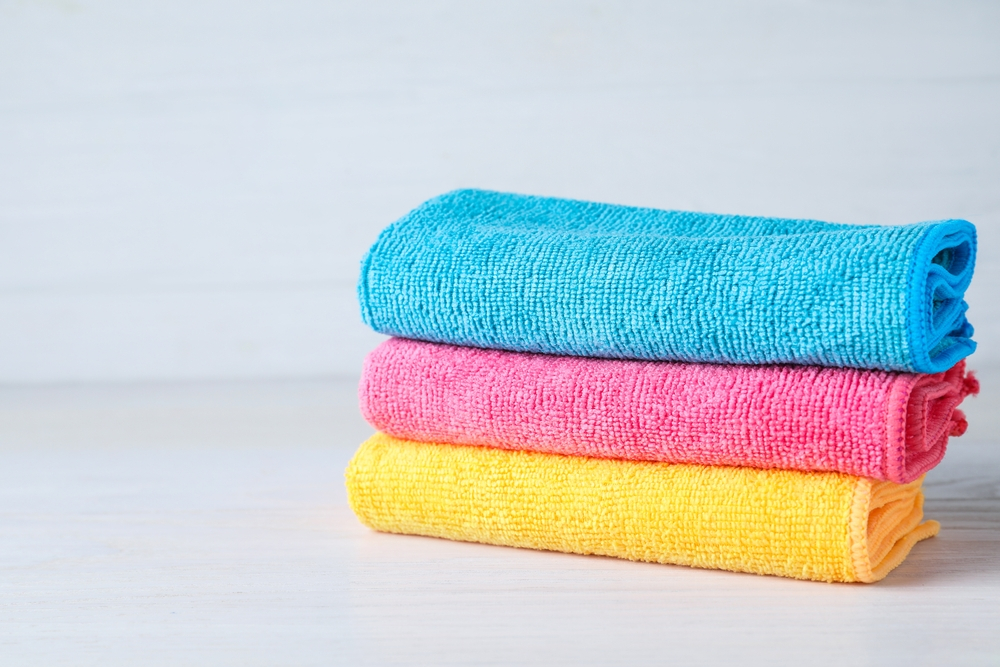Your monitor is your window to the digital world, but it’s easy for it to become marred by fingerprints, dust, and smudges, degrading the visual experience. You invest in a quality screen for clarity, not to see it obscured by grime. While cleaning your monitor might seem straightforward, it’s crucial to handle it with care. After all, it’s not just about appearances; a clean screen ensures smooth functionality and uninterrupted viewing pleasure. However, the approach to cleaning isn’t one-size-fits-all. Each monitor demands specific techniques. Understanding the delicacy of these screens is key—without proper care, scratches and damage can occur. From choosing the right cleaning tools to following manufacturer recommendations, this guide navigates the process, ensuring your screen shines without risking its integrity.
Outline
ToggleWhy to Clean Monitor Screen?
Regularly cleaning your monitor screen isn’t just about maintaining its visual appeal. It’s essential for ensuring an optimal viewing experience and reducing eye strain. Dust, fingerprints, and smudges not only obstruct your view but can also impact your eyes’ comfort while working or enjoying content. A clean screen enhances clarity, allowing you to focus better on tasks and enjoy sharper visuals, making your computing experience more enjoyable and efficient.
How Often to Clean a Monitor Screen?
The frequency of cleaning your monitor screen depends on your usage and environment. In high-traffic or dusty areas, consider cleaning your screen weekly to maintain optimal clarity. For less demanding settings, a bi-weekly or monthly cleaning routine may suffice. However, it’s crucial to observe your screen regularly and clean it as needed. Adhering to a consistent cleaning schedule ensures a consistently clear view without allowing dirt and smudges to accumulate and impact your viewing experience.
Before You Begin
Before embarking on the journey to a sparkling clean monitor, it’s crucial to prepare and gather the right tools. Following these guidelines ensures a safe and effective cleaning process.
- Know Your Screen Type: Begin by identifying the type of computer screen you have, whether it’s glass-coated or non-glass coated. Familiarize yourself with the manufacturer’s cleaning guidelines to tailor your approach accordingly.
- Power Down Your Devices: Before initiating the cleaning process, shut down your computer and monitor. This precautionary step prevents any potential damage and ensures your safety during the cleaning procedure.
- Use Distilled Water: Stick to distilled water for cleaning, avoiding tap water that may contain minerals. Dampen a microfiber cloth with distilled water for gentle and effective cleaning.
- Mind the Moisture: Be cautious not to allow moisture to drip into ports or control buttons. Excess moisture can lead to malfunctions and damage internal components.
- Microfiber Cloth Only: Say no to paper towels, tissues, rags, or old cloth. Opt for a soft, lint-free microfiber cloth to avoid scratching the screen and leaving lint behind.
- Avoid Harsh Cleaning Materials: Steer clear of makeup remover, dish soap, vinegar, alcohol, or household cleaning materials such as Windex, Lysol, or Mr. Clean. Stick to the recommended distilled water for a safe cleaning solution.
- Moderate Cleaning Liquid: Apply cleaning liquid moderately. Excessive amounts can lead to permanent screen damage. Spray the cleaning liquid onto the microfiber cloth instead of directly on the screen.
- Gentle Pressure: While cleaning, avoid exerting excessive pressure on the screen. A gentle touch with the microfiber cloth is sufficient to remove dirt and smudges without risking damage.
Understanding the types of Screens
Understanding the type of screen you have is pivotal in determining the appropriate cleaning method. Screens can broadly be categorized into glass-coated and non-glass coated. Let’s explore the distinctions between these types to ensure a tailored approach for optimal results.
Glass Coated Screens
Glass-coated screens, commonly found in devices like Mac computers, are known for their durability and resistance to scratches. Cleaning these screens involves using a microfiber cloth to wipe away dust and smudges. For stubborn stains, a mixture of distilled water and isopropyl alcohol can be applied, ensuring a gentle yet effective cleaning process.
Non-Glass Coated Screens
On the other hand, many Windows PCs feature non-glass coated screens, which may be more delicate. Cleaning these screens requires a gentle touch to avoid damage. Start by dusting the screen with a dry microfiber cloth, and then lightly dampen another cloth with distilled water for thorough cleaning. It’s essential to adhere to these distinctions to maintain the longevity and clarity of your specific screen type.
How to Clean a Glass Coated Screen?
Cleaning a glass-coated screen, such as those found on devices like Macs, demands a meticulous approach to preserve its durability and visual clarity. Let’s walk through the precise steps for effective cleaning without compromising the screen’s integrity.
- Turn Off and Cool Down: Before initiating the cleaning process, turn off your computer monitor or laptop. Allowing it to cool to the touch is essential to prevent any potential electrical shock. A black screen enhances visibility, making it easier to spot dust and smudges.
- Dust Removal: Use a clean microfiber cloth or an eyeglass towel to wipe away dust from the screen. Folding the cloth in quarters, start at the top of the monitor and wipe side to side. Move to a clean side of the cloth and wipe from the top to the bottom to capture all dust. Apply gentle pressure to eliminate most finger smudges.
- Address Stubborn Smudges: For stubborn smudges or stuck-on particles, dampen a clean microfiber cloth with distilled water or isopropyl alcohol. Use a minimal amount, ensuring the cloth is slightly damp, not dripping. Gently wipe away any remaining marks on the screen.
- Drying Process: Utilize a clean section of the dry microfiber cloth to thoroughly dry the monitor screen. This step ensures no moisture residue is left behind, maintaining the screen’s integrity.
- Outer Housing Disinfection: Use a disinfectant wipe to remove grime and dust from the outer housing of the monitor. It’s crucial to avoid using disinfecting wipes on the actual screen to prevent damage. Allow the housing to dry completely before turning the monitor back on.
How to Clean a Non Glass Coated Screen?
Cleaning a non-glass coated screen, such as those found in Windows (LED or LCD) monitors, requires a delicate touch to preserve its sensitivity. Ensure the monitor or laptop is powered off and cooled down before initiating the cleaning process. Follow these steps carefully to maintain the integrity of your screen.
- Power Off and Cool Down: Always start by turning off the monitor or laptop, allowing it to cool completely before cleaning. This precaution is crucial to avoid any potential damage during the cleaning process.
- Dry Dusting with Microfiber Cloth: Begin by using a dry microfiber cloth to remove dust. Start at the top of the screen and move toward the bottom. This dry dusting process ensures that loose particles are cleared without introducing moisture.
- Lightly Dampen Cloth for Smudges: For persistent smudges that don’t come off during dry dusting, slightly dampen a clean microfiber cloth with water only. It should never be dripping-wet. Apply gentle pressure to wipe only the smudged areas. Immediately follow with a clean, dry microfiber cloth to ensure the screen is dry.
- Disinfect Screen Housing and Controls: Use a disinfectant wipe solely on the screen housing and control areas, avoiding direct contact with the screen. Allow the housing to air-dry completely before turning the computer monitor back on.
How to Clean if the Monitor Screen has Streaks After Cleaning?
If streaks appear on the monitor screen after cleaning due to excess moisture, start by turning off and unplugging the monitor. Take a clean, dry microfiber cloth and gently wipe the screen in a circular motion, ensuring the cloth is free from any cleaning solution residue.
For a final touch, if streaks persist, use a separate dry cloth to give the screen a final wipe. Ensure both clothes are clean and free from any moisture or cleaning solution remnants. This method effectively removes streaks, restoring a clear and pristine display without the distraction of visible residue.
Clean Your Monitor Screen – FAQs
Ans: It’s best to turn off your monitor before cleaning to prevent potential electrical shock and to have a clearer view of the dirt and smudges.
Ans: The frequency of cleaning depends on your environment. In high-traffic or dusty areas, consider weekly cleanings. For less demanding environments, a bi-weekly or monthly cleaning might suffice.
Ans: Isopropyl alcohol can be used in small amounts on a clean microfiber cloth to clean stubborn smudges on certain screens. However, always check the manufacturer’s guidelines before using any cleaning solution.
Ans: Glass-coated screens can tolerate a slightly more rigorous cleaning approach, including a mixture of distilled water and isopropyl alcohol. Non-glass coated screens, like LED or LCD monitors, require a gentler touch with a slightly damp microfiber cloth.
Conclusion
To conclude, cleaning your monitor regularly is crucial for maintaining optimal clarity, reducing eye strain, and preventing damage. Choose the right tools, power down your devices, and use gentle pressure with a microfiber cloth and distilled water. Differentiate your approach based on your screen type, be it glass-coated (requiring isopropyl alcohol for stubborn stains) or non-glass coated (needing a light touch with water only). Address streaks with a dry microfiber cloth and always avoid harsh cleaning materials or excessive moisture. By following these steps, you can enjoy a sparkling clean monitor that enhances your viewing experience and protects your investment.



